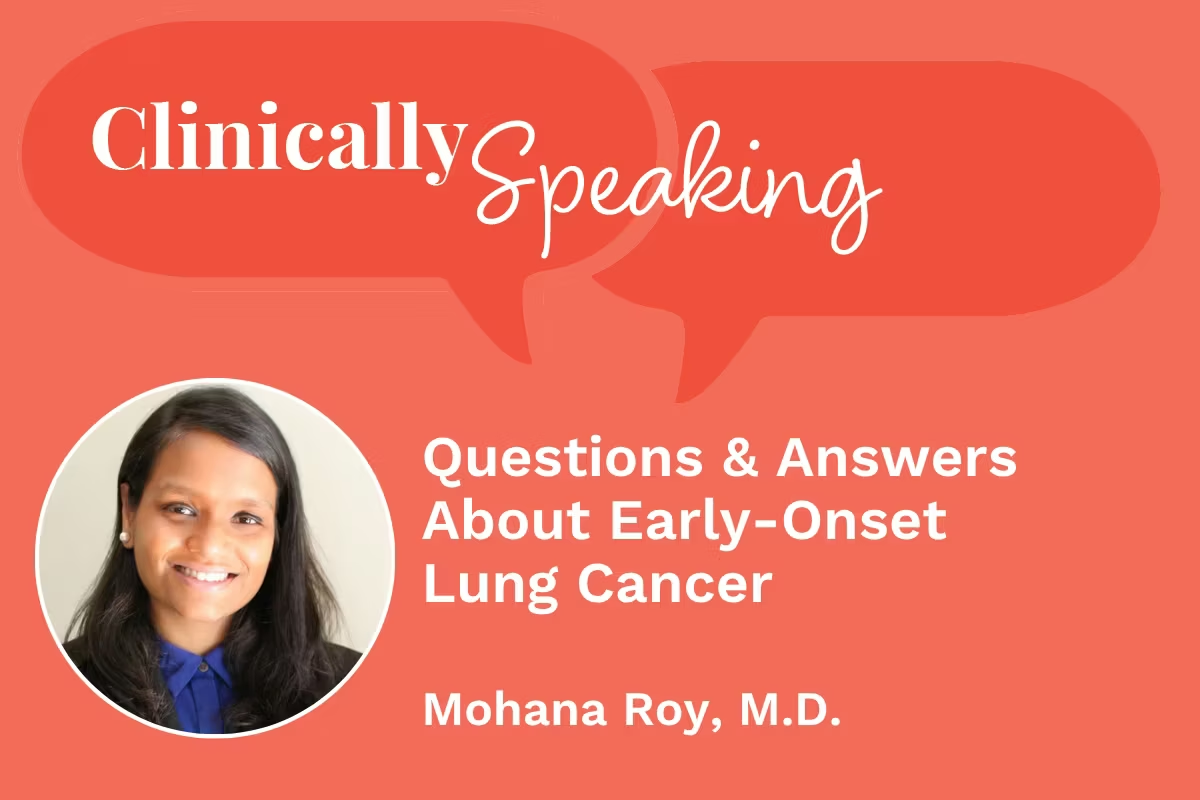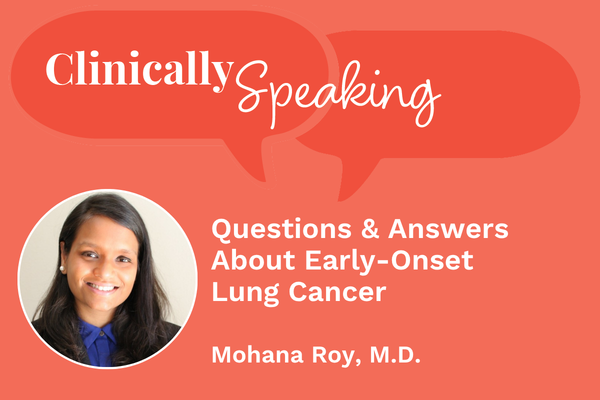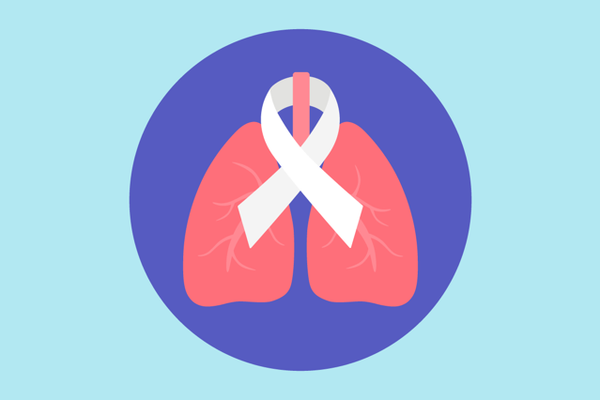Cases of nonsmokers getting lung cancer have been going up over the past 25 years, and with that, more cases of early-onset lung cancer (before the age of 50) have been occurring.
HealthyWomen spoke with Mohana Roy, M.D., medical oncologist and clinical assistant professor at the Stanford University School of Medicine, about why early-onset lung cancer is on the rise — and what experts are doing about it.
Do we know why the diagnosis of lung cancer in young people is on the rise, particularly among nonsmokers?
We don’t know why. Part of it has to do with improvements in imaging, things like X-rays and CT scans. We’re now able to see lung nodules — small areas of dense tissue — that are smaller than the size of a pea. I think we’re just detecting more cancers because of the pictures we take.
As far as lung cancer in nonsmokers goes, I think this has been one of the most challenging things in medicine. We obviously think of lung cancer as a smoking-associated disease (we don’t really use the word “cause”), but now we are finding more and more cases of lung cancer linked to mutations.
Mutations are genetic changes that happen in your DNA — they’re changes that happen within the body, not things that are inherited. Lots of research points to mutations as the reason we’re seeing more lung cancer in nonsmokers, but why some people may get these mutations is still unknown.
Do you see certain mutations more commonly in younger-onset lung cancer?
We do, yes. Epidermal growth factor receptor mutation, or EGFR, is the most common known mutation in nonsmokers. The other two we see most often — although they are still relatively rare if you look at all lung cancers — are ALK and ROS1. Those are the three main mutations we see more in nonsmokers and also in younger patients.
We also are really filling out the pie, meaning if you looked at a pie chart of all lung cancers, we only used to know about those three mutations, which are small slices since they’re still relatively rare. Now we're finding more and more mutations linked to lung cancer, so the pie keeps getting more slices. But EGFR, ALK and ROS1 are still the three most common ones.
What type of treatments are most often used in cancers with mutations?
If one of these mutations is found, a lot of the treatments are pills, which is actually pretty rare for lung cancer. Lung cancer almost always requires chemotherapy. We've done that for many, many years. But for some of these mutations, we now can skip chemotherapy because we have scientific evidence that the pill actually does better than the chemo. This was a huge revelation in our field, and it’s been the standard for about 15 years now.
These pills are a type of targeted treatment. This means they are made to selectively attack the cancer cell with the specific thing that is wrong and, hopefully, block it from growing. Many of these treatments are called tyrosine kinase inhibitors. Tyrosine kinase is one of the enzymes that allows cancer to grow, and these pills block it.
Not all patients with mutations will only get pills, though. For many patients who have the EGFR mutation and stage 4 or metastatic disease, which is when the cancer has already spread and is considered incurable, we are actually finding that adding chemotherapy to the pill might be beneficial.
Are there additional considerations for treatment side effects and outcomes for younger adults with lung cancer?
I think fertility is something we're thinking a lot more about. We haven't always had the most robust system set up in most cancer centers because, understandably, we are used to seeing older people. But I think there's actually quite a bit of national awareness about the need for fertility discussion.
With targeted treatment pills, there’s pretty limited data on how the treatment affects fertility. But in general, someone’s not supposed to be pregnant if they're taking these pills, so we do talk about that up front.
Many of these targeted treatments do cause a fair bit of rash and skin issues, and that affects body image and can also be painful. We have a really good team at Stanford who we call supportive dermatologists whose entire job is actually to help us manage side effects of these pills. We come up with lots of creams and treatments to make sure the rash is controlled and not impacting people’s day-to-day.
Usually hair loss is pretty minimal, even with the chemotherapies we use with lung cancer. I always tell my patients that my goal is for whatever happens in the clinic room to stay there, so if they go to the grocery store afterward no one can tell they’ve just gotten cancer treatment.
Are there differences in symptoms and survival between younger- and older-onset lung cancer?
In general, lung cancer survival is still very poor, and it’s definitely behind many other cancers as far as how long we’re having people live. I think for younger people, it’s honestly just much harder, because our lungs are very resilient. What I mean by that is, our lungs can hide things really well, especially if someone’s young, is not a smoker and doesn’t have another lung disease.
Someone can unfortunately have a fairly large mass in their lung and not have any symptoms. One of the scariest things is that we tend to find more stage 4 disease in young people. This is not data, necessarily. Just my experience.
For patients with mutations, the survival rate is generally better. For example, we now have data where people with the ALK mutation are living with incurable lung cancer upwards of more than five years. I know that doesn’t sound like a lot, but it’s pretty much unheard of in lung cancer that has spread — so we’ve made a lot of progress.
This educational resource was created with support from Merck.





